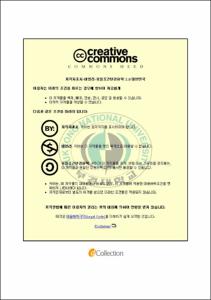깊은 용입을 얻기 위한 A-TIG 용접에서 아크 특성이 용융효율과 각변형에 미치는 영향
- Alternative Title
- Effect of Arc Characteristic in A-TIG Welding for Deep Penetration on Melting Efficiency and Angular Distortion
- Abstract
- TIG 용접에서는 용입의 한계 때문에 깊은 Groove 가공을 하여 사용한다. 이 때, Groove를 채우는 용착금속에 의한 응고 수축과 과대한 입열로 인한 변형이 문제시 되고 있다. 변형을 줄이기 위해서는 용착금속의 양을 줄이고 용융효율을 높여야 한다. 이를 위해 용입이 깊고 높은 용융효율을 가지는 용접공정 개발이 필요하다.
Plasma 용접이 일반적으로 TIG보다 용입이 깊지만, Fillet 용접부에서는 토치의 접근성이 좋지 않아 깊은 용입을 얻기 힘들다.
본 연구에서는 깊은 용입을 얻기 위한 A-TIG 용접에서 아크 특성이 용융효율과 각변형에 미치는 영향에 대해 알아보았다.
연강에서 C-TIG와 A-TIG의 아크 및 용융풀의 형상을 비교했을때 A-TIG의 아크 전압이 높아 입열이 증가하고 아크직하에 열이 집중하는 것을 확인하였다. C-TIG와 A-TIG의 용융효율과 각변형 비교결과 A-TIG가 용융효율이 높고, 형상비가 높아서 두께방향의 횡수축력의 편차가 작아 각변형이 적었다.
Deep groove processing is used in TIG welding because of the limit of penetration. In this case, distortion caused by the heat input and solidification shrinkage by the deposit metal which fills groove is a major problem. In order to reduce the distortion it is necessary to reduce the amount of the deposit metal and to increase the melting efficiency. Therefore, It is required to develop the process which can achieve deep penetration and high melting efficiency.
This study found out the effect of arc characteristic in A-TIG welding for deep penetration on melting efficiency and angular distortion.
When the arc and molten pool in C-TIG and A-TIG are compared, it is noted that arc voltage is high so that the heat input is increased and heat is concentrated under the arc in A-TIG. From result of the comparison of the melting efficiency and angular distortion in C-TIG and A-TIG, A-TIG has higher melting efficiency and lower angular distortion because of less deviation of transverse shrinkage through thickness direction cause by high aspect ratio.
- Issued Date
- 2007
- Awarded Date
- 2007. 2
- Type
- Dissertation
- Publisher
- 부경대학교 대학원
- Alternative Author(s)
- Ham, Hyo-Sic
- Affiliation
- 부경대학교 대학원
- Department
- 대학원 소재프로세스공학과
- Advisor
- 조상명
- Table Of Contents
- Abstract = 1
1. 서론 = 2
1.1 연구 배경 및 필요성 = 2
1.2 연구목적 및 개요 = 3
2. 이론적 배경 = 4
2.1 C-TIG(Conventional TIG) 용접 = 4
2.1.1 C-TIG 용접 정의 = 4
2.1.2 C-TIG 용접의 용입 증가 방법 = 6
2.1.3 C-TIG 용접의 용융 금속의 유동 = 9
2.2 A-TIG(Active flux TIG) 용접 = 12
2.2.1 A-TIG 용접 정의 = 12
2.2.2 A-TIG 용접의 용입 증가 메커니즘 = 14
2.3 용융효율의 정의 = 18
2.4 각변형의 정의 = 20
3. C-TIG 와 A-TIG의 아크 특성 검토 = 21
3.1 서언 = 21
3.2 실험 재료 및 방법 = 21
3.2.1 실험 재료 = 21
3.2.2 실험 방법 = 23
3.3 실험결과 및 고찰 = 24
3.3.1 C-TIG 및 A-TIG의 아크 및 용융풀 형상과 비드 외관 = 24
3.3.2 C-TIG 및 A-TIG 용접시 용접 파형 = 27
3.4 결언 = 28
4. C-TIG와 A-TIG의 전류 변화에 따른 용융효율 비교 = 29
4.1 서언 = 29
4.2 실험 재료 및 방법 = 29
4.2.1 실험 재료 = 29
4.2.2 실험 방법 = 30
4.3 실험 결론 및 고찰 = 31
4.3.1 C-TIG 및 A-TIG의 비드외관 및 용접 횡단면 비교 = 31
4.3.2 C-TIG 및 A-TIG의 용융효율 비교 = 35
4.4 결언 = 37
5. C-TIG와 A-TIG의 맞대기 이음에서 동일 전류시 각변형 비교 = 38
5.1 서언 = 38
5.2 실험 재료 및 방법 = 38
5.2.1 실험 재료 = 38
5.2.2 실험 방법 = 39
5.3 실험 결론 및 고찰 = 41
5.3.1 C-TIG 및 A-TIG의 맞대기 이음에서 각변형 비교 = 41
5.4 결언 = 44
6. 결론 = 45
참고 문헌 = 46
- Degree
- Master
- Files in This Item:
-
-
Download
 깊은 용입을 얻기 위한 A-TIG 용접에서 아크 특성이 용융효율과 각변형에 미치는 영향.pdf
기타 데이터 / 1.39 MB / Adobe PDF
깊은 용입을 얻기 위한 A-TIG 용접에서 아크 특성이 용융효율과 각변형에 미치는 영향.pdf
기타 데이터 / 1.39 MB / Adobe PDF
-
Items in Repository are protected by copyright, with all rights reserved, unless otherwise indicated.